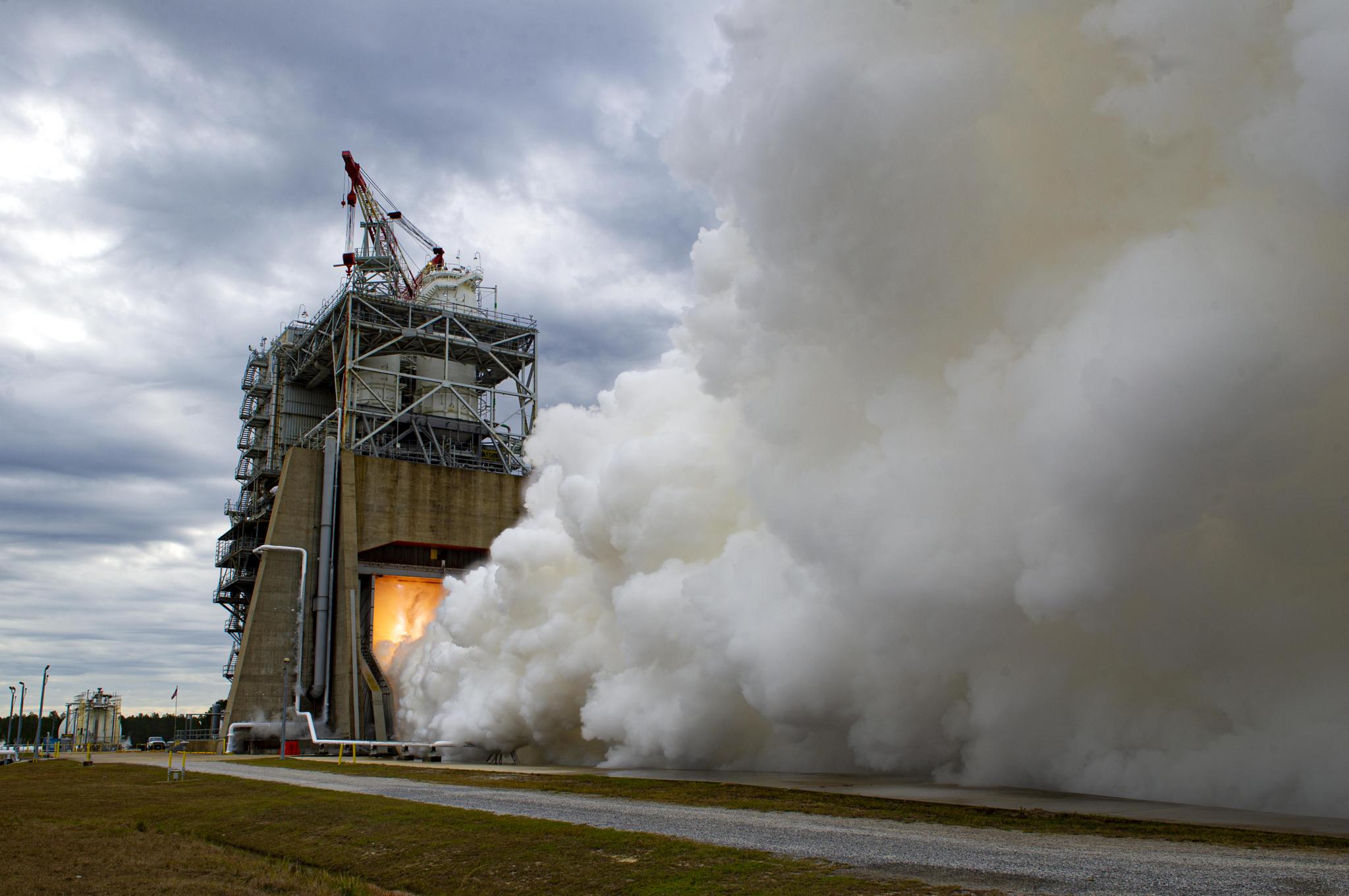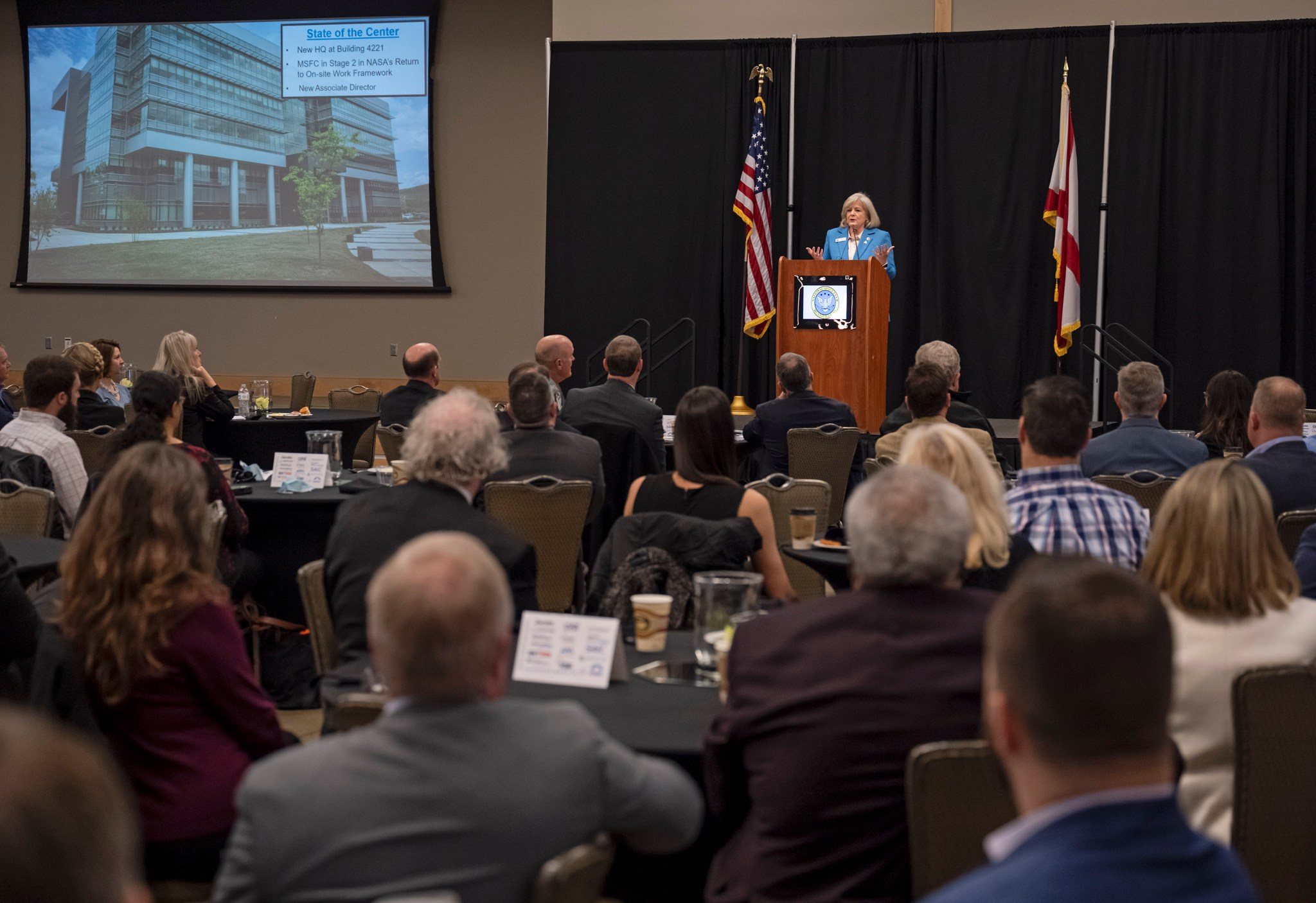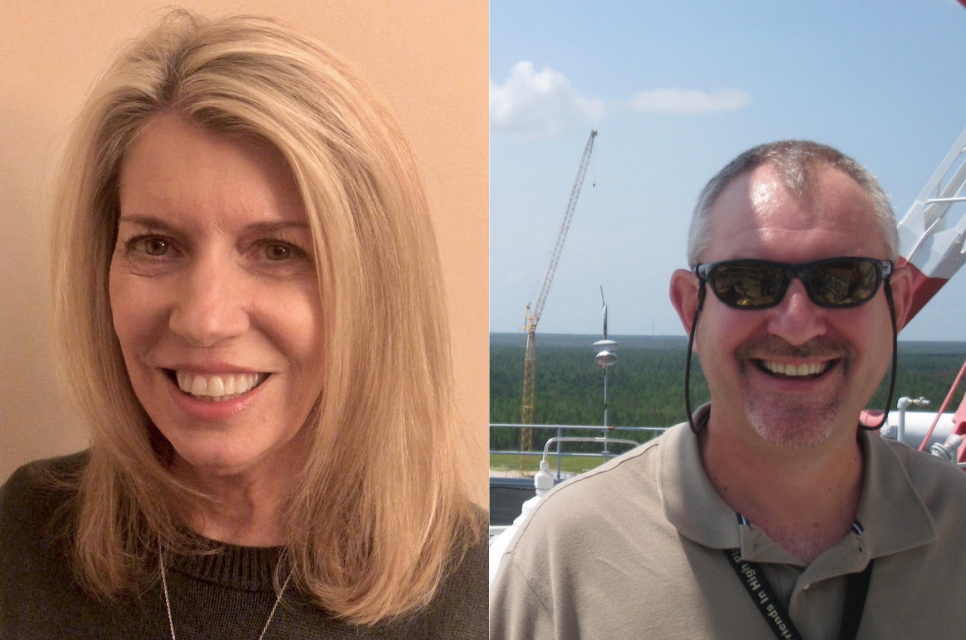Solar Sail Mission to Chase Tiny Asteroid After Artemis I Launch
Launching with the Artemis I uncrewed test flight, NASA’s shoebox-size Near-Earth Asteroid Scout will chase down what will become the smallest asteroid ever to be visited by a spacecraft. It will get there by unfurling a solar sail to harness solar radiation for propulsion, making this the agency’s first deep space mission of its kind.
The target is 2020 GE, a near-Earth asteroid (NEA) that is less than 60 feet in size. Asteroids smaller than 330 feet across have never been explored up close before. The spacecraft will use its science camera to get a closer look, measuring the object’s size, shape, rotation, and surface properties while looking for any dust and debris that might surround 2020 GE.
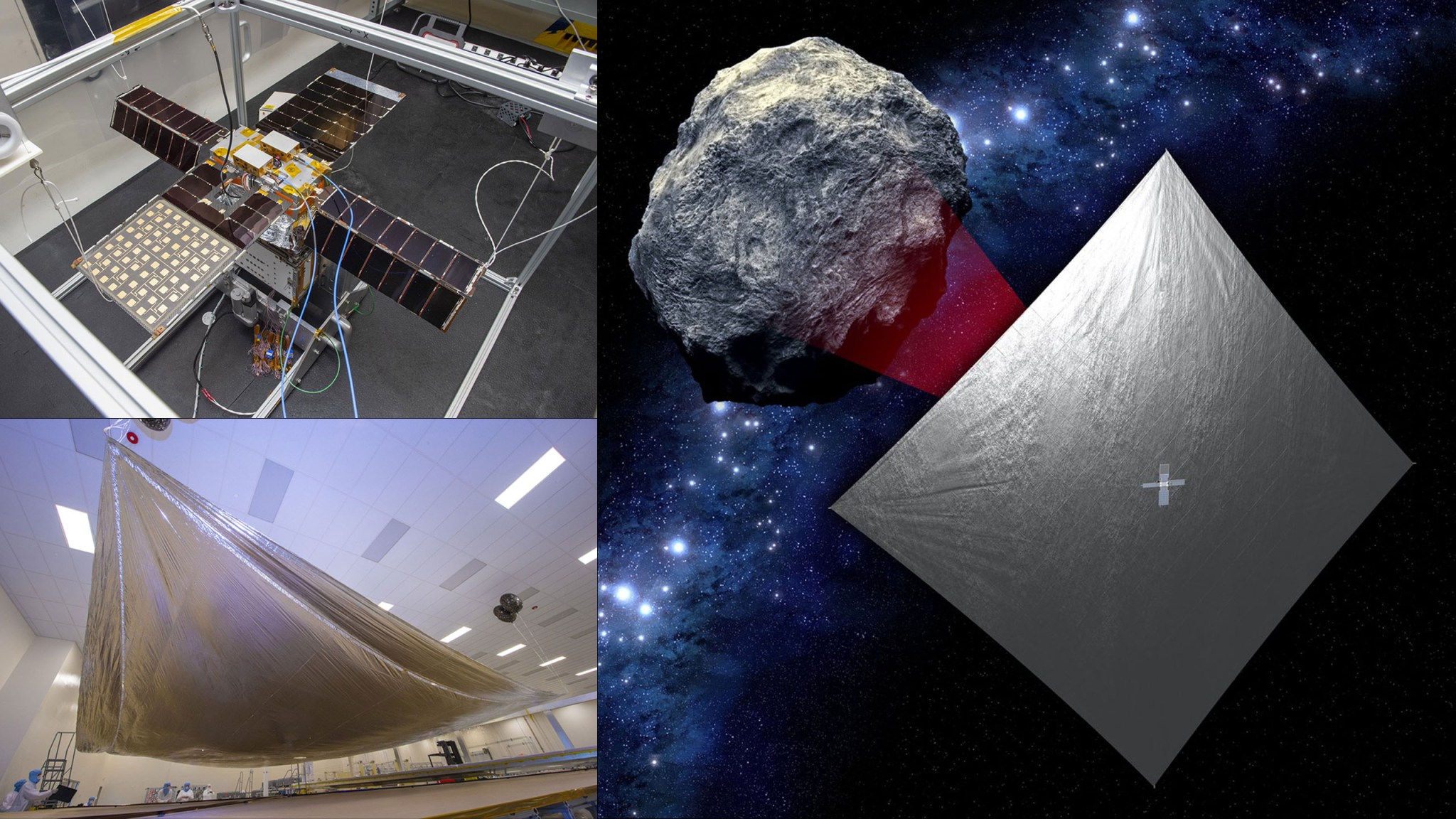
Because the camera has a resolution of less than 4 inches per pixel, the mission’s science team will be able to determine whether 2020 GE is solid – like a boulder – or if it’s composed of smaller rocks and dust clumped together like some of its larger asteroid cousins, such as Bennu.
“Thanks to the discoveries of NEAs by Earth-based observatories, several targets had been identified for NEA Scout, all within the 16- to 100-foot size range,” said Julie Castillo-Rogez, the mission’s principal science investigator at NASA’s Jet Propulsion Laboratory. “2020 GE represents a class of asteroid that we currently know very little about.”
2020 GE was first observed on March 12, 2020, by the University of Arizona’s Catalina Sky Survey as part of its search for near-Earth objects for NASA’s Planetary Defense Coordination Office.
Developed under NASA’s Advanced Exploration Systems Division by Marshall Space Flight Center and JPL, NEA Scout is a science and technology demonstration mission that will enhance the agency’s understanding of small near-Earth asteroids. Using a six-unit CubeSat form factor, it will ride as one of 10 secondary payloads aboard the powerful Space Launch System (SLS) rocket, which will launch no earlier than March 2022 at NASA’s Kennedy Space Center. NEA Scout will then be deployed from a dispenser attached to the adapter ring that connects the rocket and Orion spacecraft.
The mission will act as a nimble scout for future human and robotic missions that may utilize asteroid resources – and will gain important planetary defense insights about this class of near-Earth asteroid.
“Although large asteroids are of most concern from a planetary defense perspective, objects like 2020 GE are far more common and can pose a hazard to our planet, despite their smaller size,” Castillo-Rogez said. The Chelyabinsk meteor was caused by a small asteroid about 65 feet in diameter – it exploded over the Russian city on Feb. 15, 2013, creating a shockwave that broke windows all over the city and injured more than 1,600 people. That was the same class of NEA as 2020 GE.
Learning more about asteroid 2020 GE is only part of NEA Scout’s job. It will also demonstrate solar sail technology for deep space encounters. When released from its dispenser after launch, the spacecraft will use stainless steel alloy booms to unfurl a solar sail that will expand from a small package to a sail about the size of a racquetball court, or 925 square feet.
Made from plastic-coated aluminum thinner than a human hair, this lightweight, mirror-like sail will generate thrust by reflecting solar photons – quantum particles of light radiating from the Sun. The sail will provide most of NEA Scout’s propulsion, but small cold-gas thrusters with a limited propellant supply will also assist with maneuvers and orientation.
“The genesis of this project was a question: Can we really use a tiny spacecraft to do deep space missions and produce useful science at a low cost?” said Les Johnson, the mission’s principal technology investigator at Marshall. “This is a huge challenge. For asteroid characterization missions, there’s simply not enough room on a CubeSat for large propulsion systems and the fuel they require.”
Sunlight acts as a constant force, so a tiny spacecraft equipped with a large solar sail can eventually travel many miles per second. Solar sails are a high-performance propulsion system for low-mass and low-volume spacecraft, according to Johnson. NEA Scout will maneuver by tipping and tilting its sail to change the angle of sunlight, altering the amount of thrust and direction of travel, similar to how a boat uses the wind to sail.
In September 2023, asteroid 2020 GE will make a close approach with Earth, and with a gravitational assist from the Moon, NEA Scout will have gathered enough speed to catch up. Mission navigators will fine-tune NEA Scout’s trajectory before the spacecraft approaches within a mile of the asteroid.
“NEA Scout will accomplish probably the slowest flyby of an asteroid ever – at a relative speed of less than 100 feet per second,” Castillo-Rogez said. “This will give us a few hours to gather invaluable science and allow us to see what asteroids of this class look like up close.”
NEA Scout sets the stage for future solar sails: NASA’s Advanced Composite Solar Sail System will demonstrate novel, lightweight booms to deploy a solar sail from a CubeSat following its 2022 launch. After that, Solar Cruiser, an 18,000-square-foot solar sail technology demonstration, will use sunlight to travel toward the Sun in 2025, enabling future missions to better monitor space weather. Johnson is principal investigator for Solar Cruiser.
Mission operations for NEA Scout will also be conducted at Marshall through a dedicated flight controller staff operating out of the Huntsville Operations Support Center.
NASA Conducts First RS-25 Engine Test of Year at Stennis
NASA conducted its first RS-25 engine hot fire test of the new year Jan. 19 on the Fred Haise Test Stand at Stennis Space Center. The test was the second hot fire in the latest series that began in mid-December.
Each test in the series is providing valuable operational data to NASA’s lead contractor, Aerojet Rocketdyne, on a variety of new engine components manufactured with state-of-the-art fabrication techniques as the company begins production of new RS-25 engines. These engines will help power the agency’s Space Launch System (SLS) rocket on future deep space missions. During launch, four RS-25 engines will power the SLS, generating a combined 2 million pounds of thrust during ascent. The RS-25 engines for the first four SLS flights are upgraded space shuttle main engines and have completed certification testing. NASA will use the data from this test to enhance production of new RS-25 engines and components for use on subsequent SLS missions. The testing is part of NASA’s and Aerojet Rocketdyne’s effort to use advanced manufacturing methods to significantly reduce the cost and time needed to build new engines.
For the Jan. 19 test, engineers fired the RS-25 developmental engine at power levels ranging from 80% to 111% for a full duration of about 8 1/2 minutes (500 seconds), the same amount of time the engines must fire to help propel SLS to orbit. New hardware tested on the engine includes valves, insulation, rigid and flex ducts, a high-pressure fuel turbopump, a high-pressure oxidizer turbopump, instrumentation, and a POGO accumulator manufactured using selective laser melting.
SLS will be the world’s most powerful rocket and the only one capable of sending the agency’s Orion spacecraft, astronauts, and supplies to the Moon in a single mission. Initial SLS missions will send Orion to the Moon as part of NASA’s Artemis program, including the Artemis I uncrewed test flight this year that will pave the way for future flights with astronauts to explore the lunar surface and prepare for missions to Mars. Artemis missions also will land the first woman and first person of color on the lunar surface. SLS and Orion, along with the commercial human landing system and the Gateway outpost in orbit around the Moon, are NASA’s backbone for deep space exploration.
RS-25 tests at Stennis are conducted by a combined team of NASA, Aerojet Rocketdyne, and Syncom Space Services operators. Syncom Space Services is the prime contractor for Stennis facilities and operations.
Singer Touts Center, Community Collaboration in National Space Club Address
Jody Singer, director of NASA’s Marshall Space Flight Center, discusses the positive, symbiotic relationship between Marshall and North Alabama communities in her keynote address at the National Space Club-Huntsville breakfast Jan. 19 at the Jackson Center. “I appreciate your commitment and tremendous support to move the American space exploration program forward,” Singer said. “As we approach the first launch of the Space Launch System on the Artemis I mission, it is only possible because of the hard work and dedication of so many people at Marshall and throughout this community. The Artemis I mission is so important because this will be the first time flying SLS and Orion as an integrated system.” When SLS launches for the first time, it will be the most powerful rocket in the world and send Orion thousands of miles beyond the Moon, farther than any spacecraft built for humans has ever flown, over the course of about a three-week mission. The National Space Club-Huntsville is a nonprofit association devoted to excellence in space activity. Through its programs, activities, and awards, the club works to promote space leadership and motivational activities for youth. (NASA/Charles Beason)
Take 5 with June Malone
By Daniel Boyette
Hiking the Grand Canyon and overseeing a NASA office have more in common than might be expected.
According to June Malone, director of the Office of Strategic Analysis & Communications at NASA’s Marshall Space Flight Center, similarities between the two endeavors include setting a goal and working toward it in small, achievable steps, imagining success and what you’ll feel like upon completion, and surrounding yourself with people who can support you in reaching your goal. And while striving to reach a goal, it’s important to be in the moment, she said, enjoying and celebrating each step along the way.
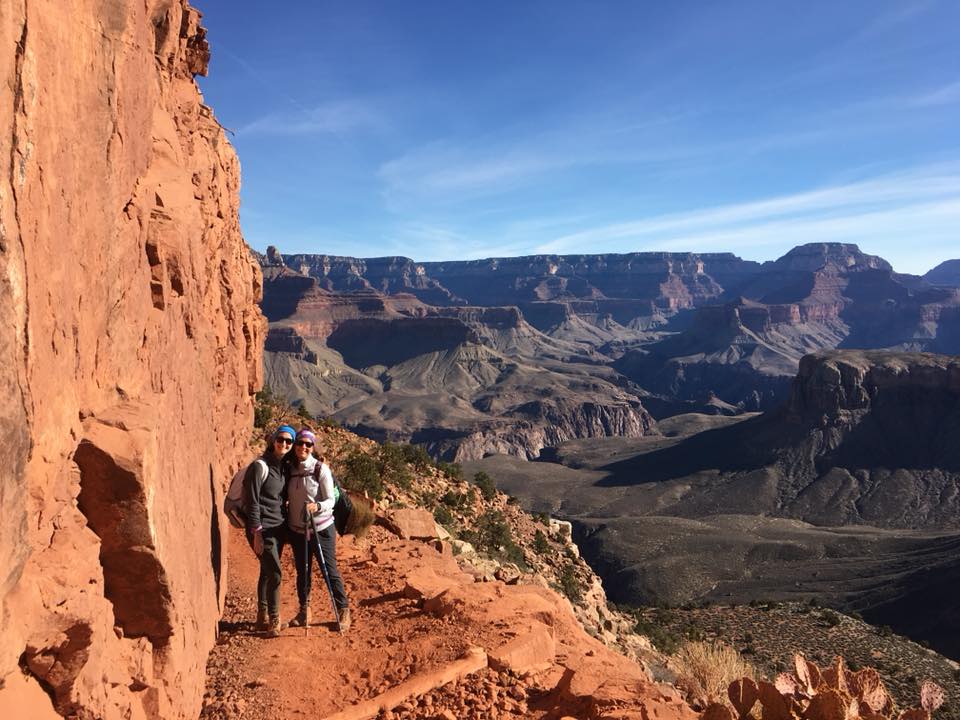
An outdoors lover and competitive runner, Malone said hiking into the Grand Canyon to the Colorado River and hiking out the next day was her most challenging athletic undertaking.
“Not only was it physically challenging but it required a considerable amount of emotional energy and centering,” she said “There was a lot of self-talk to keep hiking on. Leaving before dawn for our hike out and watching the Sun rise into the canyon was breathtaking. And the most important piece of the adventure was taking it on with my daughter as my hiking partner. It was a priceless and exhilarating experience in so many ways.”
Question: How do you encourage teamwork, collaboration, and integration, especially in this unprecedented telework environment?
Malone: Bringing people together who may not have previously been in working groups helps create a sense of why and how they fit beyond the day-to-day routine. Holding mini virtual off-site meetings helps make time for the important work and not just the urgent, and helps us envision our path forward and see how we get there together. I encourage people to work on projects with new and different people as well as stretching into new and different roles, which helps develop the team. We’ve onboarded people during the pandemic who’ve never met the team and paired them with other members of the team to help catalyze their knowledge, ability to contribute, integrate within the team, and develop team unity. We place a strong focus on integration and who needs to be included. Working in the virtual environment makes that easier in some ways. I make sure to ask, “Who else needs to be here?” and, “Who would benefit from this conversation?” I try to think beyond the moment or the immediate task at hand of what needs to be accomplished but who could benefit in development through the experience.
Question: How are you managing work-life balance personally and for your team, especially now, more than a year into the COVID-19 pandemic?
Malone: I’ve never liked the term “work-life balance.” For me, it’s life balance, and work is an element of my life that needs to be balanced into the whole. My health and overall wellness have always been a priority; walking and exercising continue to be something I make sure to plan into my daily routine. At the start of the pandemic and mandatory telework, it seemed many of us, me included, slipped into 24/7/365 work availability. That simply isn’t healthy or sustainable. The unpredictability of duration, the unknown, and the constant ups and downs of the pandemic have made the situation even more challenging. I had a serious self-talk about establishing healthy boundaries for myself and my team. I set a normal cutoff time to end the workday. We identified preferred ways of contact in the event there is a true work emergency, which allows us to put our phones down and turn computers off. Other keys have been communicating up and out to establish norms; encouraging team members to take time off even if it means just enjoying some down time without leaving on a grand vacation; knowing when to say “no” and ask for help; and setting priorities. Just being there for others is huge.
Question: What key partnerships are your team pursuing to help NASA build and develop a sustainable presence on the Moon? Help push the boundaries of science, technology, and/or human exploration?
Malone: It is going to take all of us to return to the Moon and travel on to Mars. Everyone is vital, whether you’re helping determine and balance budgets, ensuring the communication infrastructure and security, keeping our facilities maintained, inspiring the nation through telling our story, or building the actual hardware that will take us there or gain new scientific knowledge. The Office of Strategic Analysis & Communications partners with countless organizations – internal and external to the center – to strengthen our ability to embark on these bold endeavors. This includes our community, industry leaders, academia, NASA Headquarters, key stakeholders, etc. Our office helps integrate strategy and helps bring people together who will enable the agency to accomplish its goals.
Question: How does your team honor and demonstrate NASA’s commitment to creating a diverse and inclusive environment?
Malone: I feel it’s important to get to know everyone on my team not just for what they do but for who they are; to find out what’s important to them. We strive to talk openly about diversity, equity, inclusion, and accessibility, and have a moment during staff meetings to focus on those topics. When dealing with certain difficult conversations, we seek outside assistance to facilitate discussions that develop greater understanding of one another. We aim for inclusiveness in our teams – we want a diverse group of individuals with different backgrounds and perspectives. When hiring, we consider how new individuals will increase diversity and improve our ability to deliver. We place emphasis on communication to ensure that what we say is reflected in how we bring Marshall to the public.
Question: Why do you think your team is successful at staying mission-focused?
Malone: I believe in empowering people to do what they’re good at while stretching them to discover more about themselves, which grows their skills and abilities and strengthens them as people. I also believe in trusting people to do their work and ensuring they have the right resources. This isn’t always a financial resource; it can be other individuals who provide support or inform, access to tools, etc. By empowering a team, the group can soar to do great work in support of our mission. I also try to help the team understand how critically linked they are to the mission. I truly believe the work that our office does is exciting – setting the course for the future, helping organizations with the supporting systems and information they need for mission success, inspiring the public, and connecting with key stakeholders to be active supporters for what we do for our nation.
Boyette, an LSINC employee and the Marshall Star editor, supports Marshall’s Office of Strategic Analysis & Communications.
Recent Take 5s
Dayna Ise, Marshall’s Space Nuclear Propulsion manager
Lakiesha Hawkins, deputy manager of the Human Landing System program at Marshall
Dwight Mosby, manager of Marshall’s Payload and Mission Operations Division
David Brock, Marshall small business specialist
Brian Key, manager of the Planetary Missions Program Office at Marshall
Jacquelyn Gower, William Hause Recognized as Space Hero
Jacquelyn Gower left, and William Hause are the latest team member from NASA’s Marshall Space Flight Center to be named a Space Hero. Gower interfaces with all of the elements and offices of the Space Launch System Program as a senior-level integration schedule analyst supporting the SLS Program Planning and Control Office. She works diligently to ensure that integrated program schedule analyses are accurate and communicated to senior-level management, and her efforts are crucial to the planning of the Artemis missions. Hause has continually provided tremendous support to the SLS Program Stages Office’s Program Planning and Control team as a senior program analyst. Most recently, he played an instrumental role in evaluating the submitted data across multiple cost models of a major contract proposal. He has provided analysis to crosswalk the different models and to organize the data in a manner that was easily communicated to senior-level project management, technical leads, and other programmatic analysts. Each week, the Exploration Systems Development and Space Operations mission directorates recognize Space Heroes, team members from across the agency who have made vital contributions in their support of NASA’s mission to land the first woman and first person of color on the Moon. (NASA)
NASA Offers $1 Million for Innovative Systems to Feed Tomorrow’s Astronauts
By Taylor Goodwin
As NASA prepares to send astronauts further into the cosmos than ever before, the agency aims to upgrade production of a critical fuel source: food. Giving future explorers the technology to produce nutritious, tasty, and satisfying meals on long-duration space missions will give them the energy required to uncover the great unknown.
In coordination with the Canadian Space Agency, NASA is calling on the public to help develop innovative and sustainable food production technologies or systems that require minimal resources and produce minimal waste. Dubbed the Deep Space Food Challenge, the competition calls on teams to design, build, and demonstrate prototypes of food production technologies that provide tangible nutritional products – or food.
Over time, food loses its nutritional value. That means for a multiyear mission to Mars, prepackaged food will not meet all the needs for maintaining astronaut health. Additionally, food insecurity is a significant, chronic problem on Earth in both urban and rural communities. Disasters that disrupt supply chains further aggravate food shortages. Developing compact and innovative advanced food system solutions through initiatives such as the Deep Space Food Challenge could have applications in home and community-based local food production, providing new solutions for humanitarian responses to floods and droughts, and new technologies for rapid deployment following disasters.
“Feeding astronauts over long periods within the constraints of space travel will require innovative solutions,” said Jim Reuter, associate administrator for NASA’s Space Technology Mission Directorate at the agency’s headquarters. “Pushing the boundaries of food technology will keep future explorers healthy and could even help feed people here at home.”
In October 2021, Phase 1 of the challenge culminated as NASA awarded 18 teams a total of $450,000 for their concepts for innovative food production technology that produces safe, acceptable, palatable, nutritious food products that are stable and high quality, while minimizing necessary resource inputs. NASA and the Canadian Space Agency jointly recognized 10 international teams for their winning submissions. NASA’s supporting partner of the challenge, the Methuselah Foundation, sponsored two $25,000 awards to international teams for their outstanding innovation. The Canadian Space Agency awarded 10 teams $30,000 Canadian dollars each to their winning teams.
NASA now invites both new and existing teams to enter Phase 2, which will require teams to build and demonstrate prototypes of their designs and produce food for judging. Interested participants from the United States can compete in Phase 2 for part of a prize purse up to $1 million.
“We are excited to continue collaborating with the Canadian Space Agency to conduct the next phase of this challenge and identify solutions from across the globe,” Reuter said.
The Deep Space Food Challenge asks competitors to create a food production technology, system, or approach that could potentially be integrated into a complete food system to sustain a crew of four on a three-year deep space mission. Everything needed to store, prepare, and deliver food to the crew, including production, processing, transport, consumption, and disposal of waste should be considered. Proposed technologies such as plant growth systems, manufactured food products, and ready-to-eat solutions combined could provide the future crews with a variety of options that would provide the needed daily nutrition.
In Phase 1, NASA’s judges grouped U.S. submissions based on the food they envisioned producing. Among the designs were a variety of systems that ranged from complex to very simple. Teams proposed technologies to produce ready-to-eat foods, such as bread, as well as dehydrated powders that could be processed into food products. Other technologies involved cultivated plants and fungi or engineered food, such as cultured meat cells, all of which could be grown or produced by the crew on deep space missions. Details about the winning submissions and teams can be found on the challenge website.
All teams involved in Phase 1 of the challenge met the registration requirements to enter Phase 2. New teams are welcomed and highly encouraged to participate after providing the required registration information, due by Feb. 28. The Canadian Space Agency is hosting a parallel competition with a separate application and judging process, as well as its own prize purse, for participating Canadian teams. Qualifying teams from other countries may compete but will not be eligible for monetary prizes.
The Deep Space Food Challenge is a NASA Centennial Challenge. Centennial Challenges are part of the Prizes, Challenges, and Crowdsourcing program within the Space Technology Mission Directorate and are managed at NASA’s Marshall Space Flight Center. Subject matter experts at NASA’s Johnson Space Center and NASA’s Kennedy Space Center support the competition. NASA, in partnership with the Methuselah Foundation, manages the U.S. and international Deep Space Food Challenge competition.
Goodwin, an LSINC employee, supports Marshall’s Office of Strategic Analysis & Communications.


























